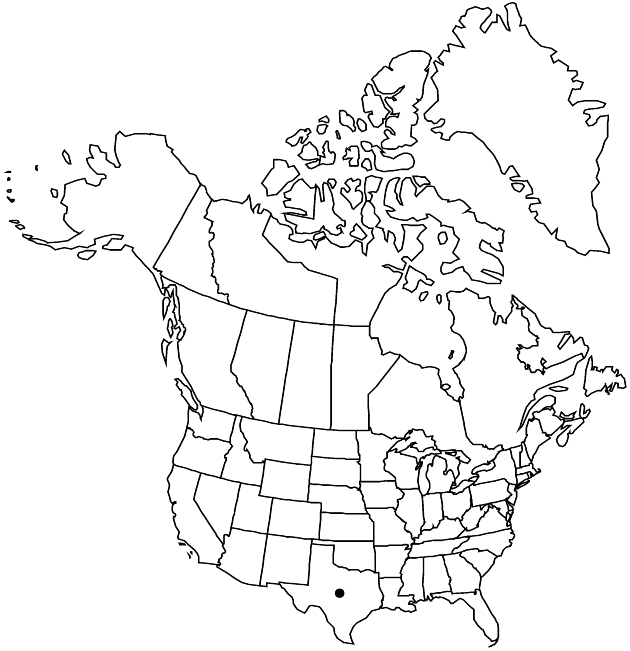Hymenopappus carrizoanus
Phytologia 67: 294, fig. 1. 1989.
EndemicConservation concern
Biennials (perhaps flowering first-year), 45–150 cm. Leaves: basal 2-pinnate, (3–) 8–12 cm, 2-pinnate, lobes 4–10 × 0.5–1 mm; cauline 12–25+. Heads 45–60 per stem. Peduncles (1–) 2–5 cm. Phyllaries gray-green, (3.5–) 5–6 × (1.5–) 2.5–3.5 mm. Ray-florets 0. Disc-florets 20–40; corollas whitish (drying pinkish), 3–4 mm, tubes 1.5–2 mm, throats funnelform, 1–1.5 mm, lengths 1–2 times lobes. Cypselae 4 mm, ± hirtellous to villous; pappi of 16–20 scales 1–1.5 mm.
Phenology: Flowering Apr–Jun.
Habitat: Sandy soils, oak woodlands
Elevation: 50–100+ m
Discussion
Of conservation concern.
Selected References
None.
Lower Taxa
None.
... more about "Hymenopappus carrizoanus"
introrse +
connate +
herbaceous +
scarious +
absent +
hirsute +
papillate +
corymbiform +
continuous +
2-pinnate +
decurrent +
toothed +
1-2+ times pinnately lobed ultimate margins usually entire +
winged;ribbed;winged;ribbed +
1;15 +
stigmatic +
absent +
zygomorphic +
whitish +
monomorphic +
12-16-ribbed +
dimorphic +
obpyramidal +
staminate +
Tex. +
straight +
distinct +
proximal +
1;5 +
bisexual +
dispersed +
singly +
discoid +
aggregated +
indeterminate +
45;60 +
surrounding +
obconic;hemispheric +
petiolate +
alternate +
2-carpellate +
inferior +
attached +
anatropous +
persistent +
falling +
absent +
tough +
thick +
absent +
connate +
scarious-margined +
persistent +
distinct +
falling +
subequal +
Phytologia +
1989 +
pistillate +
absent +
fertile +
epaleate +
convex;flat +
fibrous +
exalbuminous +
modifed +
2;3 +
alternate +
erect +
scapiform +
2-branched +
papillate +
Hymenopappus carrizoanus +
Hymenopappus +
species +
1-2 times lobes +
equaling +
longer +
biennial +
